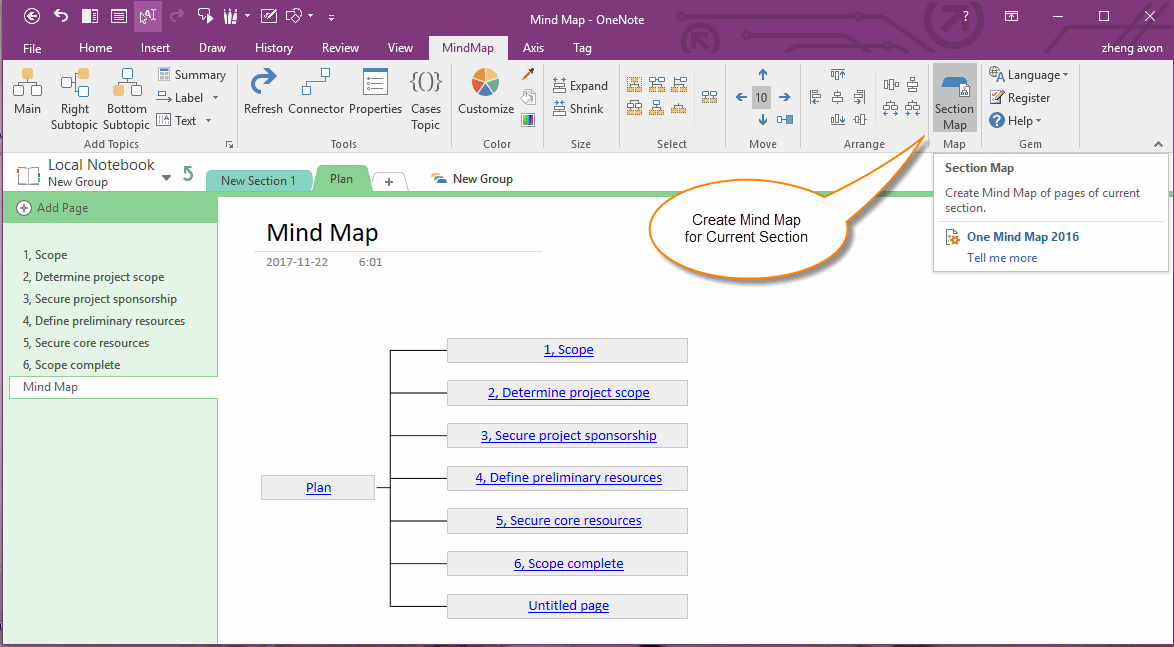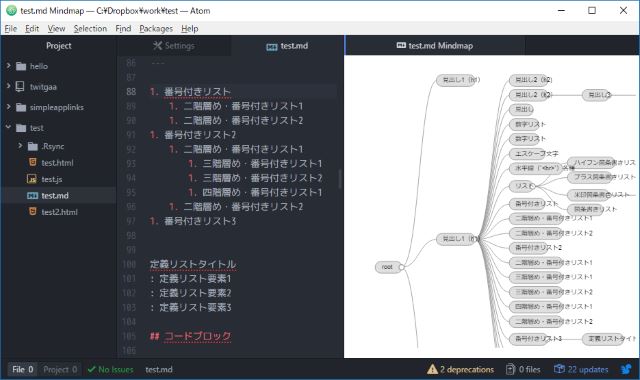This is a sample mind map, 1.Our Lady of Strasbourg, 2.Fourviere, 3. The vineyards, 4.Eurodisney, 5.Louvre Museum, 6.Mont Saint-Michel, mind map = tech. MindNode – Mind Map Download and Install for your computer - either Windows PC 10, 8 or 7 and macOS 10 X, 32/64-bit processor, we have you covered. XMind is the most professional and popular mind mapping tool. Millions of people use XMind to clarify thinking, manage complex information, brainstorming, get.
XMind, Scapple, and Freemind are probably your best bets out of the 12 options considered. 'Extremely flexible' is the primary reason people pick XMind over the competition. This page is powered.
Free Mind Mapping Software
Mind Map Markdown Editor
There are many free mind mapping tools, such as FreeMind, that are a good option if you want to make basic mind maps. There are also some subscription-based online mind mapping tools which allow users to store maps on the internet for sharing and collaboration. Working online may prove a little cumbersome because it is dependent on your internet connection and some features, shortcuts and habits will be different from traditional desktop software. However, online mind mapping software makes it easy for an educational institution to provide remote access to students.
Mind Map Markdown Examples

Storing mind maps containing confidential or sensitive information online could cause some security issues that conflict with company policies, GDPR compliance and educational regulations for storing student data. Please beware that some cloud solutions lure you in with free basic versions but charge on a monthly basis for the advanced features you may need.
There are many iPad, mobile and Tablet PC solutions available but they are yet to reach the standard of desktop applications when it comes to creating the basic mind map. As far as overviewing the map, small screen size is a problem even for average sized maps – which is basically the whole point! It will take some time and practice to master typing and capturing information on a small screen.

Mind Map Markdown Sublime
Mind map: How to.
More videos on the Free Video Course: https://enjoy.thinkific.com/courses/mind-map-for-beginners
Im going to show you how to mind map. Its a quick start overview of how to mind map with five main principles: Central Image, Keywords, curving branches, colour and images.
0:14 Principle 1. I've got a little bike here, and I'm using the bike as a little image to understand mindmapping. You've got a bike with a bike frame, the bike frame is crucial to the bike and so is a central image to your mind map. Starting in the centre of the page and having some sort of image or shape there, with your topic written out, and ideally two or three colours. Unless its a sketch map. So you've got your central image.
0:46 Principle 2. We've got our key words. Here I've got a wheel. And can you see the keys? The idea is that the key words are a single word on each branch. Thats the norm. People often ask 'Can I have multiple words?' Well, ' a sentance?' no not really. The idea is to unpack sentances into keywords. But maybe sometimes you want a quote, thats fine you move it towards the edge and maybe Instagram style it, put it in a box or something like that. What about a phrase? Its rare to have a phrase, two or three or four words, but you can put two or three words if its like a short quote or something like that. Something really important. What about a pair of words? Yes, somtimes a keyword can be a pairing of words. And occasionally thats fine too. Try and avoid multiple words as much as possible. Try and stick to single words on a branch, its a really useful tip and it lets you get more out of the mind map.
1:58 The next question is what order do you put the key words into? What position should they go into? You've stripped down the sentance into keywords, we don't use sentance order we order it according to importance. The really important words move towards the centre like topic words and the key words. And then the details move towards the edge.
2:25 The third principle is curving branches. The idea of curving brances is that it maintains the flow of information and makes it quite attractive to your eye to engage you in reading your mind map. The branches go underneath the words to support them and keep them close. If you don't put your branches under the words and you do a branch and then a word, a branch and then a word at the end of it, your mind map gets very spidery very quickly and falls off the edge of the page.
2:59 We put the branches in clockwise order like this and you do the main branches in clockwise order and then you also do the sub branches in clockwise order even once you get to '9 o'clock' you do it in clockwise order, which can feel a bit counter intuitive at the beginning. Now if you want to do it a different way thats fine as well. But make sure you consistently do it the same way each time. If your showing your mind map to someone who is used to doing mind mapping they will probably expect it to be in clockwise order all the way. Although some computer programs do it from top to bottom, it just depends, but I would recommend sticking with the clockwise order.
3:46 The branches go from thick to thin like a real tree. The thick shows the relative importance of those key words compared to the thin details along the edge.
So those are the three main principles of mind mapping. If you get them right you have a really strong structure to your maps. Obviously you've already got power in your mind map because youve got those key words, theyre crucial. But to make it really memorable and engaging for your mind colour and images really help.
4:22 So lets look at the fourth principle: Using Colour. We colour our branches the same colour. We do that either as we do the branches or you can do it in black and white and then colour each branch system at a time or you can do the whole map in black and white and recolour the whole thing at the end. Each has its own advantages.
4:54 The fifth principle is using images. Use the images for landmark ideas and facts. Landmark ideas and facts are those sorts of things that you know will be important at some point. Now you can mark them in very simple ways. The kinds of images we use are simple, often symbols or doodles. They might develop into something more artistic in the future but don't get too caught up in being an artist.
We've covered five principles of mind mapping and we are going to do into a few of those principles in the next videos.
Free online video course for mind mapping for beginners it has loads more videos: https://enjoy.thinkific.com/courses/mind-map-for-beginners
Facebook: https://www.facebook.com/Enjoy-Courses-201077323562581/
Twitter: https://twitter.com/DariusNmN
The little book that started this all off (UK):
https://www.amazon.co.uk/Use-Your-Head-Unleash-Power/dp/1406644277/ref=sr_1_1?s=instant-video&ie=UTF8&qid=1462487766&sr=8-1&keywords=use+your+head
The amazing little book that started this all off (US):
